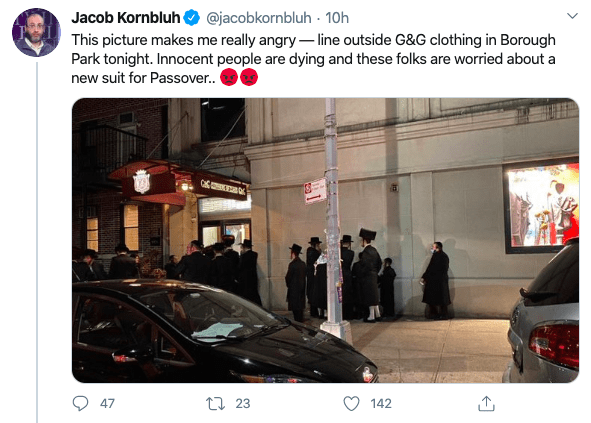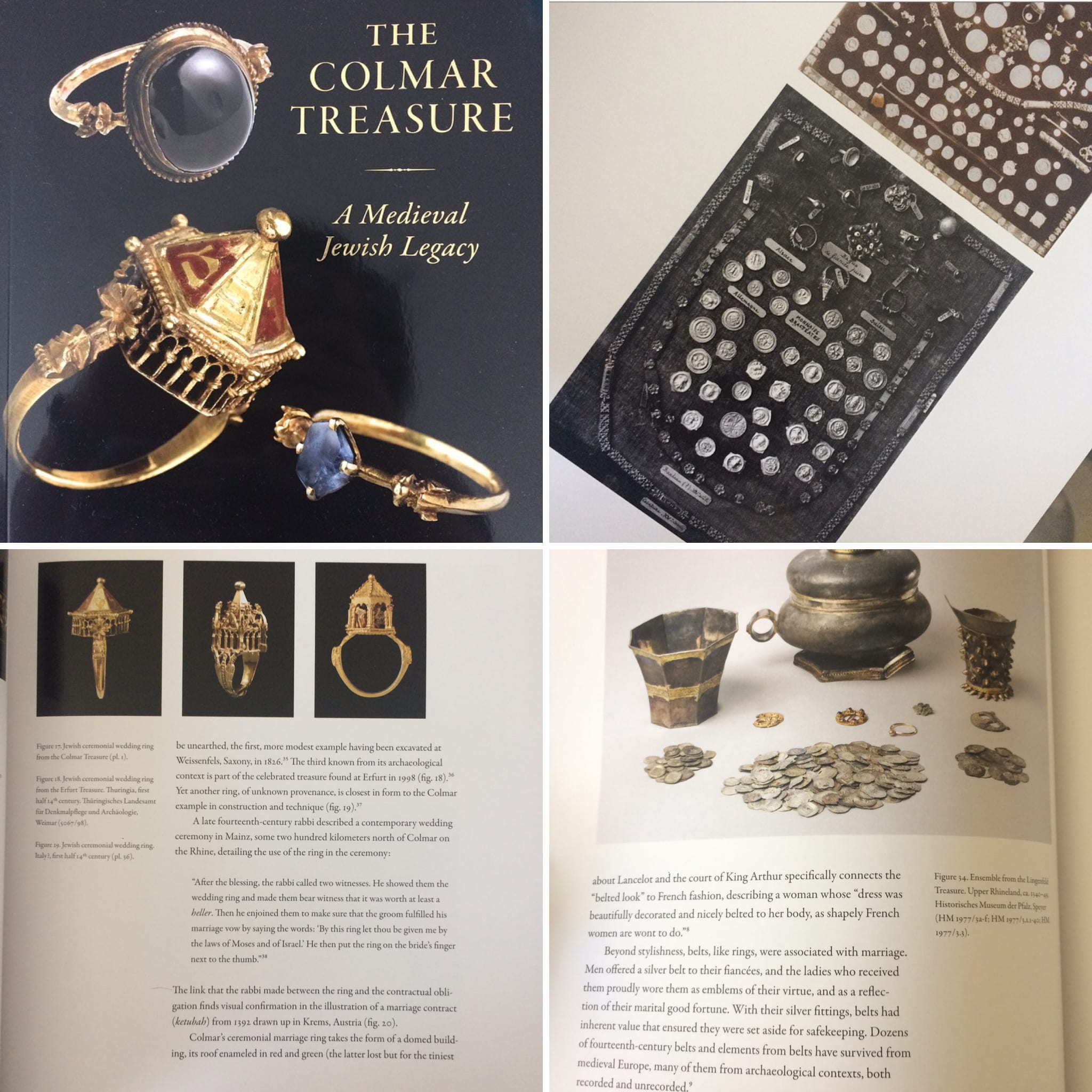
The first time I traveled with students to Spain, one in my group was a talkative sophomore in the NYU honors program with a name straight out of the Hebrew Bible. He was great at keeping any discussion going — I suspect that he liked the attention that talking brought him, but he was also genuinely interested and had questions at every turn. In the Prado Museum he saw six-pointed stars surrounding a late fourteenth-century church altarpiece and asked our tour guide — an older Spanish art historian of a conservative school of thought — why there were Jewish stars in Christian art. The guide looked puzzled and I asked him to hold off and ask me later. I knew she wouldn’t understand his question, because those six-pointed stars were not Jewish stars. He repeated his question when he saw the same geometric design in the modern plaza below the tenth-century walls of the Arab settlement at Majeriṭ, which would come later to be known as Madrid.

“It reflects geometric designs found in Islamic contexts from the period when this wall was built,” I explained. He argued for its inherent Jewishness.
“In the tenth century,” I answered him, “and all the way up to the fourteenth, the six-pointed star wasn’t a Jewish symbol; it was just a geometric design.”
He was incredulous, reluctant to accept that a shape with such deep symbolism could have been chosen, as he put it, “just at random.” His final argument was: “But it’s on the flag of Israel!”
“Which,” I reminded him, “was founded well after the fourteenth century.”
This is a very typical and important kind of conversation. Students who were brought up in any one of the Abrahamic religious traditions that my research and teaching touch upon often find their personal beliefs and the tenets they learned in their families or their synagogues, churches, or mosques, challenged by the historical development of their religions and the ways in which medieval people practiced those religions that look very different from the ways in which they are practiced today. I tell every class of students at the beginning of every semester — and I firmly believe — that my role as a teacher isn’t to change or challenge their religious beliefs or their place in their own communities; rather, my role is to show them where scholarship has gotten us. And every semester I have students express shock — sometimes loudly, but always, in my experience, without malice and in a way that can start defensive but usually leads to very genuine inquiry — as they learn the history of their communities and learn the ways in which religious history has been interpreted throughout time.
A different set of questions about the symbolism of the Jewish star, and with a very different tenor, have been raised by various LGBTQ and feminist groups demonstrating this summer: The Dyke March in Chicago ejected marchers who were carrying the gay-pride flag modified with a white Jewish star; the feminist Slut Walk in the same city has indicated that it will adopt a policy of ejecting anyone wearing Jewish symbols and has begun to use the anti-semitic slur “zio” in some of its publicity materials. Slut Walk protests in some other cities are following suit, while others are openly welcoming Jewish feminist marchers.
Perhaps most striking in the aftermath of the Dyke March was some of the organizers claiming that they were justified because “different symbols mean different things to different people.” That is, of course, what makes literature work. When the principle stops working, though, is when a reader of the symbol decides that it can only work one way; it turns the interpretation of literature into a treasure-hunt for symbols and a cryptogram to be solved, nothing more. And in day-to-day life, it tends to stop working when an outside what the one operative meaning of a symbol they have chosen for themselves works.
The history of the six-pointed star as a Jewish symbol doesn’t run along a straight line. There are two ideas about the origin of the symbol that are common in many Jewish communities: First, that it is a messianic symbol that dates back to an early Jewish revolt against the Romans in the 2nd century of the Common Era; and second, that it acquires a mystical meaning somewhere in between the 13th century, when the kabbalistic work The Zohar was composed and the 16th, with the composition of Isaac Luria’s The Book of the Lion. Both of these ideas are parts of the stories that communities tell about the evolution of their own symbols and rituals. The reality is much more complicated and interesting.

The scholar of Jewish mysticism Gershom Scholem traced a different development of the symbol: It occurs occasionally in very limited Jewish contexts in the early centuries of the Common Era; it appeared as a part of underground Jewish magical practices beginning in the thirteenth century, came above ground in the fourteenth, and didn’t come to be known as the “Shield of David” and be a symbol of the Jewish people, and recognized as such by both Jews and Christians until as late as the seventeenth century in central Europe. It does not start being used on Jewish tombstones until that point, and does not spread to the rest of Europe and the world until the late eighteenth and early nineteenth. It was adopted by the Zionist congress in 1897, but also remained a Jewish symbol, apart from nationalism.
The stories about the role of the Jewish star in the Bar Kochba rebellion and as a part of Lurianic kabbalah are stories that communities tell about the origin of a symbol that has come to have meaning. In large measure, the Star of David is one that has come to be meaningful through a process of reclamation by different Jewish communities: It was imposed by Christian nobility in 17th-century Prague and Jews there came to claim it as their own; and, as Scholem himself wrote: “But even Zionism did not do so much to confer the sacredness of a true symbol on the Shield of David as did that mad dictator who made of it a badge of shame for millions of our people, who compelled them to wear it publicly on their clothing as the badge of exclusion and of eventual extermination. Under this sign they moved along the road of horror and degradation, struggle and heroism. If there be such a thing as a soil that grows meaning for symbols, this is it.” For the sake of this argument I will concede the separation of Zionism and Judaism (although I don’t think that such a point can really be conceded so freely without further discussion, nor do I think that it is non-Jewish liberals who should be allowed to define these terms, either) and say that while it is a Zionist symbol, it is also a wholly separate Jewish symbol with its own range of meanings and long, winding history.
(Just as an aside: I also hesitate to draw in Scholem’s point about the Holocaust being what effectively sanctified the symbol in the 20th century because of the way it has become a political football in precisely this kind of discussion: I can think of half a dozen examples since the November election when non-Jewish liberals have, on one hand, used the Holocaust to make a political point about discrimination and genocide . This political rhetoric, which grows up alongside protest movements such as the ones under discussion here, appropriates the tragedy but then also dictates what is the appropriate response of victims. I know that those are not the values and the actions of liberal groups and activists that value cultural authenticity and the self-determination of minority groups. I don’t know how to reconcile the contradiction.)
On the face of it, I’ve made two different points through the anecdotes in this blog post: On the one hand, I wanted to challenge my student to think about the six-pointed star in artistic contexts outside of Judaism and earlier than its usage as a Jewish symbol. On the other hand, I hate to see non-Jewish activists dictate how their Jewish counterparts use a symbol that is of history community value to them. Maybe I’m just a contrarian pain in the arse who likes challenging people’s assumptions. But maybe the points aren’t so far apart from each other after all: in each case, I would ask people to think about a geometric shape and its life in the world as it is, not as they would like it to be. I asked my student to think about the use of the six-pointed star outside of Jewish contexts, and I’d ask the organizers of the Slut Walk to think about it as one that has its own history and mythology in an American Jewish community that has been and is increasingly living under threats of religious persecution. As liberals, we have accepted as a first principle that the way in which a community, particularly a community at a structural disadvantage, defines itself merits respect. (And for the academics in the bunch, we’re past the linguistic turn and know that accounts of history are representations of their author rather than a recoverable accounting of What Actually Happened Then.) And so narrative — and in this case the stories that Jews, and even politically liberal Jews tell ourselves about the history of our symbol — is a reality worthy of respect. In my role as a teacher, I want my students to see a world that does not have them at the center. In my role as a Jewish feminist, I want my community to be able to define itself and to be heard.
*None of the photos in this post are my own.










